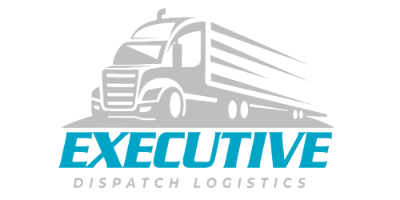In the trucking industry, certain endorsements are required for drivers to operate specific types of vehicles. One of these essential endorsements is the Tanker Endorsement, which allows truck drivers to transport liquid cargo in tanks. If you’re considering a career in trucking or want to expand your driving qualifications, understanding what a tanker endorsement is and how to obtain it can be crucial for your success.
What is a Tanker Endorsement?
A tanker endorsement is a special certification added to a Commercial Driver’s License (CDL) that authorizes the holder to operate a vehicle designed to transport liquid or gaseous cargo in bulk. This cargo is typically stored in a tank or tanker trailer attached to the vehicle. The tanker endorsement is marked as “N” on a CDL and signifies that the driver has the necessary knowledge and skills to safely operate tank vehicles.
Why is a Tanker Endorsement Important?
The tanker endorsement is required because transporting liquids, especially hazardous ones, presents unique challenges and risks. Liquid cargo shifts during transportation, which can affect the vehicle’s handling and stability. Drivers must understand how to control the vehicle to prevent accidents, spills, or other safety hazards.
Moreover, tankers are used to transport a wide range of liquids such as:
- Fuel and Gasoline: Transporting flammable liquids demands additional safety knowledge.
- Chemicals: Some chemicals are hazardous to the environment or human health.
- Food-grade Liquids: Such as milk or juices, requiring cleanliness and specific transport procedures.
A tanker endorsement is essential for drivers who wish to expand their employment opportunities and become qualified for jobs in industries that rely on tankers.
How to Get a Tanker Endorsement?
Obtaining a tanker endorsement requires a few steps, typically as follows:
- Hold a CDL: Before applying for a tanker endorsement, you must already have a valid Commercial Driver’s License (CDL).
- Pass a Written Test: You will need to pass a written knowledge test specifically covering tank vehicle safety, handling, and related regulations. The questions will focus on topics such as:
- The effects of liquid cargo on a vehicle’s stability.
- Properly securing cargo and preventing spills.
- Understanding the different types of tankers and their special needs.
- Demonstrate Skill Proficiency: Some states may require practical skills tests, but this is not always the case. It’s crucial to check with your local Department of Motor Vehicles (DMV) or licensing agency for any specific requirements in your state.
- Complete the Application Process: Once you pass the written test and meet any other state-specific requirements, you’ll apply for the tanker endorsement through your state’s licensing agency. There may be additional fees involved.
- Maintain a Clean Driving Record: Maintaining a clean driving record with no significant traffic violations is important for getting approved for a tanker endorsement.
Benefits of Having a Tanker Endorsement
A tanker endorsement can open up many new opportunities in the trucking industry. Here’s why it’s valuable:
- Higher Earning Potential: Tanker truck drivers often earn more compared to those driving standard trucks. The added risks and responsibility of transporting liquid cargo come with higher pay.
- Increased Job Opportunities: Many industries, including the petroleum, chemical, and food sectors, require tanker truck drivers. Having a tanker endorsement makes you eligible for a broader range of job openings.
- Specialized Skills: Tanker drivers gain a unique set of skills that sets them apart from other CDL drivers. This expertise can enhance your job security and long-term career prospects in the trucking industry.
Safety Considerations for Tanker Truck Drivers
Operating a tanker truck requires a high level of responsibility, as the risks associated with transporting liquids are significant. Here are some essential safety tips for tanker truck drivers:
- Weight Distribution and Tank Stability: Tankers must be loaded and unloaded carefully to ensure even weight distribution, which helps maintain stability. Drivers must also be aware of the liquid sloshing in the tank, which can affect the vehicle’s handling, particularly during turns or sudden stops.
- Slippery Surfaces: Tanker drivers need to be cautious of spills, which can create hazardous driving conditions. Some tanker vehicles also have a higher risk of jackknifing due to the fluid shifting inside the tanks.
- Proper Maintenance: Regular inspection of tanks and associated equipment is necessary to ensure that all safety features, such as pressure release valves and seals, are functioning properly.
- Handling Hazardous Materials: For drivers transporting hazardous or flammable liquids, it’s essential to have specialized knowledge of safety protocols and emergency response procedures.
Conclusion
A tanker endorsement is a valuable asset for CDL drivers, offering the opportunity to transport a wide variety of liquid and gas cargo. By passing a written exam, demonstrating driving competence, and maintaining a clean record, drivers can secure this endorsement and unlock new career opportunities with higher pay and specialized skills.
If you are considering becoming a tanker driver, make sure to prioritize safety and stay informed about the regulations in your state. With the right knowledge and training, you can confidently take on this rewarding career path.



Leave a reply